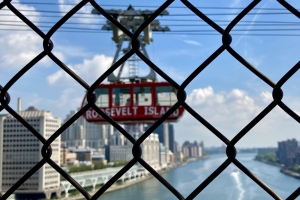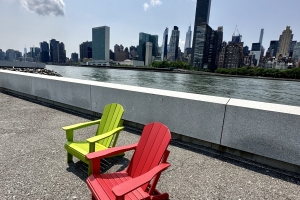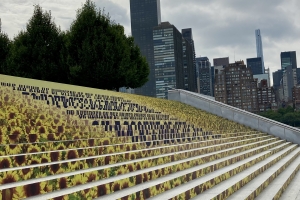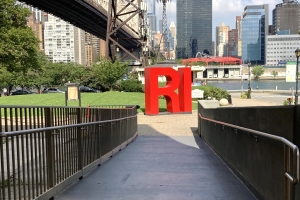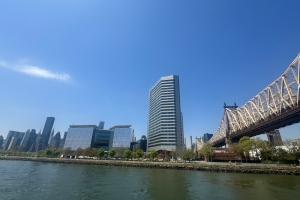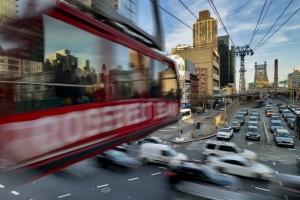3 Hour Walking Tour of Roosevelt Island
Roosevelt Island: A Walk Through Vision, Memory, and Innovation
Once known by the Lenape as Minnehanonck, the island has carried many names and roles: from Manning Island (1686) to Blackwell’s Island (1796), Welfare Island (1921), and finally Roosevelt Island (1973), in tribute to President Franklin D. Roosevelt and his vision for human rights and social progress.
For much of the 19th century, this isolated strip was home to institutions of confinement and care—asylums, smallpox hospitals, and almshouses—reflecting the era’s evolving ideals of public health and social responsibility. Remnants of that time remain, such as The Octagon, a striking neoclassical structure that once served as the main entrance to the New York City Lunatic Asylum. Today, it has been reborn as a sustainable residential building—an emblem of urban reinvention.
At the northern tip, we’ll visit the charming Blackwell Island Lighthouse, built in 1872 by asylum inmates to mark dangerous currents. It still stands as a quiet sentinel to the island’s more forgotten chapters, framed by a peaceful riverside park.
Crossing the island, we’ll explore its 1970s reinvention as a car-free modernist community, master-planned by Philip Johnson and John Burgee. Their vision aimed to create a socially inclusive, pedestrian-friendly environment—long before such ideas became mainstream in urban design. The original developments and public spaces they inspired still offer a window into New York’s experimental spirit.
We'll ride or observe the iconic Roosevelt Island Tramway, a marvel of mid-century engineering that has become both a mode of transportation and a cinematic symbol of the city. Suspended above the East River, it provides breathtaking aerial views of Midtown Manhattan, the Queensboro Bridge, and the bustling waterway that has shaped so much of New York’s commerce and identity.
At the southern tip of the island, we’ll arrive at the extraordinary Four Freedoms Park, the final work of Louis Kahn. With its monumental granite lines and contemplative symmetry, it pays homage to Roosevelt’s 1941 speech outlining the essential freedoms of modern democracy. Few places in the city balance austerity and optimism with such architectural grace.
Nearby, the Cornell Tech campus rises as a beacon of the city’s future—where innovation, sustainability, and education intersect. With contributions by leading firms such as Morphosis, Snøhetta, and Weiss/Manfredi, this next-generation academic village showcases a bold, eco-conscious vision of urban development.
Throughout our walk, we’ll reflect on Roosevelt Island as more than a geographic anomaly—it is a living laboratory where the city’s ideals of care, innovation, and reinvention take physical form. With Manhattan on one side and Queens on the other, this island invites you to see New York not just as it is—but as it strives to become.

